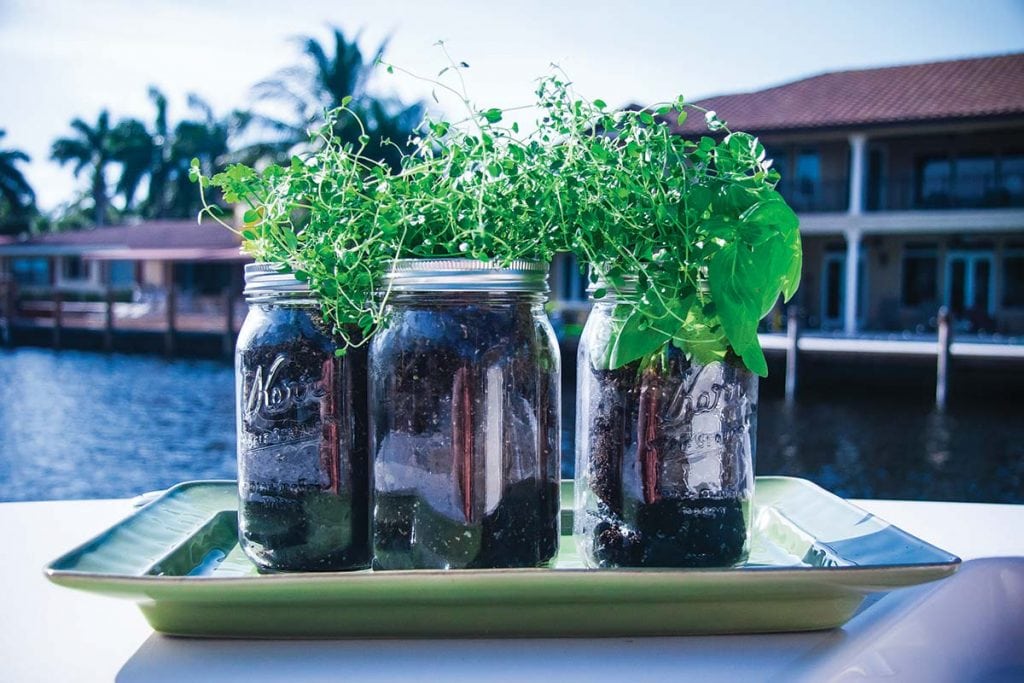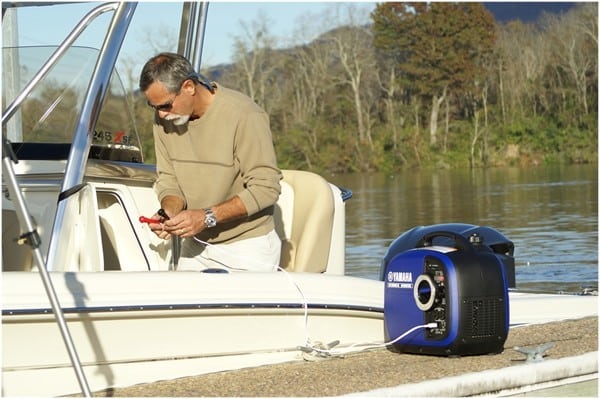Grow a galley herb garden and liven up your onboard menus.
Everyone loves an extended cruise no matter the destination. But occasionally long trips mean leaving certain things back on shore, including the fresh provisions you’ve come to enjoy. However, not everything has to stay behind! The ease of growing herbs in almost any location means they’re easy to bring along while cruising. Herbs thrive in ideal boating conditions and, like people, enjoy opportunities to soak up the sunshine. Fresh herbs liven up the galley and add zest to complement any onboard meal. Whether it’s a sprig of fresh mint in your evening mojitos or parsley on top of spaghetti, incorporating fresh herbs into meals will kick the party up a notch with minimal effort. (Just because you’re on a boat doesn’t mean your fare has to be out of a box or a can.) Herbs are low maintenance, can freshen up the interior of any living space and growing them will also give you an opportunity to improve your green thumb.
Thoughts of indoor herb gardens normally bring to mind visions of small, potted plants dotted along a kitchen windowsill. Luckily, transitioning herbs into life on the water is just as easy as growing them back on land. There’s a variety of ways to ensure your herbs thrive—grow them in small planters, old cans and even mason jars—that all work well in areas with limited space. However, there are a few considerations to keep in mind when looking after herbs on a boat that don’t apply to kitchen varieties. While herbs love plenty of sunshine and water, salt spray will permanently damage most herbs if they are left on deck for too long, although a few hours outside won’t hurt them. A good rule of thumb to follow is that almost every herb will need at least four to six hours of quality sunlight a day, even if it’s just through a window.
In order to get started, consider where you’ll keep your herbs, what variety you want to grow and what planting method makes the most sense based on space requirements. Interior windowsills are always a great place to keep herbs. However, many herbs will also thrive in any of the nooks and crannies onboard provided they get enough sunlight. Although there are many varieties of herbs, not every type is cut out for life on the water. Generally, mint, thyme, rosemary, dill, sage, tarragon, parsley, and basil all adjust well to life on a boat, grow quickly and make wonderful additions to most menus. Furthermore, their fragrance enhances interior spaces and provides a welcoming element to any room. The previously mentioned herbs grow quickly and within only a few short weeks will be ready to enjoy in a variety of dishes.
To assemble your herb garden you’ll need:
• Old food cans or Mason jars
• Drill with a small drill bit
• Terra-cotta saucer
• Juvenile plants or seedlings
• Quality potting soil
• Mint, oregano, parsley, mint, thyme, or other plant/seedlings
• River rocks or small pebbles
To begin, decide how many herbs to plant. Is your goal to simply spice up the occasional cocktail, or are you picturing fresh parsley or cilantro in daily Italian meals? The answer to this question, as well as space limitations, will determine the number of starting herbs. Wash the appropriate amount of cans thoroughly and allow them to dry.
Whatever container you choose, ensure it has proper drainage. If you’re using cans, drill several small holes into the bottom of each can to allow proper drainage. For glass Mason jars, fill the bottom of each jar with a small layer of river rocks or pebbles to provide drainage.
Next, fill a terra-cotta saucer with small river rocks. Fill the cans or mason jars two-thirds of the way full with quality potting soil. Remove the herbs from their pots and replant them in either the cans or Mason jars. Add a little more potting soil to cover the roots of the herbs. Water the herbs so the soil is damp all the way through, and arrange cans on the terra-cotta saucer. Place where herbs will be able to receive four to six hours of sunlight daily. Remember to partially rotate the cans or jars every few days to ensure even growth. Forgetting to do so could cause the herbs to become spindly, as they’ll stretch out in an attempt to find more sunlight.
Fortunately for boating enthusiasts, herbs are hardy and simple to care for. Herbs only require occasional watering; give them water once the top two inches of soil have dried out. Make sure to keep a saucer or liner underneath each can or Mason jar to avoid ruining a windowsill or tabletop. Excess water is particularly damaging to herbs as sitting in water quickly causes their roots to rot. If your herbs begin to turn brown, assume the cause is overwatering. Wait until the plants reach between 6-8 inches in height before you harvest. Trim off approximately 1/3 of the branches, cutting close to a leaf intersection, which will ensure that your herbs regrow quickly and provide lasting enjoyment for many meals to come.
By Susanna Botkin, Southern Boating Magazine
September 2016












